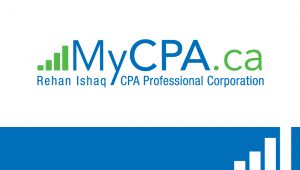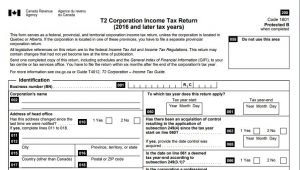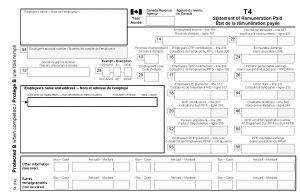With the tax season upon us, find a helpful tax checklist to assist you in getting organized.
Ontario Cuts Corporate Tax Rates for Small Businesses
Ontario will cut corporate tax rates for small businesses from 4.5% to 3.5% on the first $500,000 of active business profits effective January 1, 2018. The general corporate tax rate for profits above $500,00 will remain at 11.5% in Ontario. The reduction in provincial tax rates combined with the recently announced cut for federal corporate tax rates will result in combined rates as follows:Ontario will cut corporate tax rates for small businesses from 4.5% to 3.5% on the first $500,000 of active business profits effective January 1, 2018. The general corporate tax rate for profits above $500,00 will remain at 11.5% in Ontario. The reduction in provincial tax rates combined with the recently announced cut for federal corporate tax rates will result in combined rates as follows:
- 2017 – 15% (11.5% federal and 4.5% provincial)
- 2018 – 13.5% (10.0% federal and 3.5% provincial)
- 2019 – 12.5% (9.0% federal and 3.5% provincial
Additionally, a new incentive to hire and retain young workers is also being introduced. Small businesses with less than 100 employees will get a $1,000 incentive to hire workers between 15 and 29. If the business retains the employee for six months, there is another $1,000 incentive.
The rate cuts and incentives are being offered as the new minimum wage rate of $14 per hour (from $11.60 per hour) will be coming into effect (January 1, 2017). The rate will increase to $15 per hour in January 2019.
There have been a lot of proposals and rate changes impacting small business owners over the last few months. If you have any questions please contact us at info@mycpa.ca or call me at 416-303-3089.
Taxation for Private Companies

July 18th, 2017 Bill Morneau, the Finance Minister, released draft legislation, explanatory notes and a consultation paper that we have been waiting for since the 2017 Federal budget.
There are four areas that the proposal will impact entrepreneurs that are operating as a private corporation:
- Corporate reinvestment
- Income splitting
- Lifetime capital gains exemption
- Capital gains conversion to dividends
Corporate Reinvestment:
Currently private corporation tax rates are lower than personal tax rates, resulting in a greater amount of after-tax earnings available for reinvestment when compared to income earned personally. This deferral of personal tax is eliminated when the earnings are distributed to individual shareholders as dividends (concept know as tax integration). The current system provides business owners an opportunity to reinvest a greater amount into the corporation. There is no restriction on the types of investments that can be made (from equipment for active business to passive income generating assets like permanent life insurance, real estate, loans and marketable securities). Currently income from passive investments is taxed at higher rates when earned in a corporation. There is a refund mechanism in place to ensure that the income that is paid to shareholders is not taxed twice.
The government believes that the deferral of tax is an advantage that corporations have over unincorporated individuals. The proposal looks to remedy this by increasing the tax on corporate passive investments funded from after-tax business earnings. The proposal would potentially remove the refundable component of investment tax that would result in the after tax return in a corporation to be similar to the return an unincorporated individual would have. However, the tax rate of the passive income in aggregate (paid within the corporation and then by the individual when the dividend is paid out) could be as high as 70%. Additionally, the proposal also eliminates the tax-free capital dividend account (used to pay out tax free dividends for the 50% tax free portion of corporate capital gain).
If you have passive investments in your private corporation as part of your overall tax planning strategy, you will want to revisit the plan with your accountant or advisor to understand the impact of these changes may have on your plan. Draft legislation was not provided for corporate reinvestments. The proposal on corporate reinvestment is subject to public input and comment. Be sure to voice your opinion (see “Next Steps”).
Income Splitting
The current system allows private corporations to issue shares to family members (spouse and adult children) at nominal cost providing the business a mechanism to share profits. This provides the family business an opportunity to income sprinkle as a means to use the lower marginal tax brackets available to lower income family members. However, the existing legislation limits dividend payments to minor children (“kiddie tax”) and transferring passive income to a souse (“attribution”).
The proposed legislation will increase the base of individuals (“specified individuals”) subject to the kiddie tax to include adult children and other related individuals. Additionally, the types of income that will be subject to the expanded kiddie tax have been broadened. The proposal does exclude amounts received by an individual 18 and over that are reasonable in the circumstances. The determination of reasonable will depend on the circumstance, which will factor in the age of the individual and what contribution (monetary or labour) was invested in the business. The reasonableness test will depend on the facts of each case.
The proposal could impact estate freezes where parents transfer the future growth in value of a business to the next generation. Any dividends paid to the next generation, which has not provided services or capital to the business, would trigger payment in the highest marginal tax rate. A lot of small business owners operating a successful business through a private corporation have used this strategy to plan for the future. Likewise a spouse that owns shares in a family business, but provides no capital or services to the business will be taxed at the highest marginal rate. The draft legislation for this proposal is to be effective for the 2018 calendar year.
Lifetime Capital Gains Exemption:
Currently the lifetime capital gains exemption (LCGE) provides the shareholders of qualified small Canadian corporations exemption on gains realized on the dispositions of shares. The amount of the lifetime exemption is approximately $835,000 in 2017 and is indexed for inflation. The current LCGE is available to minor children and spouses. The shares can currently be owned by a family trust and allocation of the gain to the beneficiaries is eligible for the LCGE upon disposition.
Draft legislation has been proposed to limit access to the LCGE. The exemption will no longer be available to gains accruing in years while the individual was under 18. The LCGE will no longer be available if the gain would otherwise be included in the split income rules covered above, limiting the ability of family members from claiming LCGE on gains where they are silent shareholders or did not contribute resources to the business.
Capital Gains Conversion to Dividends
Capital gains can be realized on dispositions of property, including private corporation shares. Currently tax legislation prohibits an individual from benefiting from the lower capital gains tax when selling shares from one corporation to another of a company in which the selling corporation has greater than 10% investment. In such a circumstance the capital gain would be recategorized as a dividend.
In the proposal there is draft legislation that is effective July 18, 2017. This legislation would prohibit the use of tax cost in shares of a corporation where the tax cost to the taxpayer includes sales or gains realized by a person not dealing at arm’s length. The gain may be subject to capital gains and dividend tax. Alternatively the government is considering the possibility of recharacterizing any distribution from a corporation into a taxable dividend under certain circumstances.
What Can You Do?
See your accountant to determine the impact the proposed legislation may have on your business and tax planning. Additionally, voice your opinion by writing to your MP (sample letter from Tax Templates Inc. ) and let them know how these rules will negatively impact entrepreneurs, their families and their employees. Also write to the Department of Finance (fin.consultation.fin@canada.ca) to voice your concerns.
If you have any questions or would like to discuss the impact on your business, contact us.
New 15% Property Tax for Foreign Buyers in Ontario
Ontario has announced a new 15% tax on the purchase of property located in certain parts of Ontario by non-residents. This new tax will be in addition to the land transfer tax and will be in effect as of April 21, 2017. The tax should not impact agreements of purchase and sale signed on or before April 20, 2017.
Non-residents are individuals who are not Canadian citizens or permanent residents of Canada.
What are all these tax slips?
As you get organized to prepare and file your taxes, you will be inundated with slips from various sources of income you generated during the tax year. Following is a list of some of the more common slips and why you may have received them:
- T4 Statement of Remuneration Paid – This is the most common slip and one that most employees are familiar with. The slip is prepared and filed by the tax payer’s employer. It shows your employment income, CPP/EI contributions and income tax paid during the year.
- T4A Statement of Pension, Retirement, Annuity, and Other Income – There are many reasons that someone may receive a T4A slip. Some of the income types that result in you receiving this slip include:
- Pension
- Self-employed commissions (i.e. real estate representatives)
- Annuities
- RESP assistance payments
- Research grants, scholarships, medical travel assistance
- RDSP income
- Death benefits
- T4A(OAS) Statement of Old Age Security – If you are receiving OAS, you will receive this slip to report the income and any tax withheld.
- T4A(P) Statement of Canada Pension Plan Benefits – If you received CPP, you will also get this slip to report the income and any tax withheld.
- T4E Statement of Employment Insurance and Other Benefits – If you received employment insurance benefits (i.e. lost your job or were on maternity leave), you will receive a T4E to report the benefits you received and the tax that was withheld.
- T4RIF Statement of Income from Registered Retirement Income Fund – This slip is issued to a tax payer who received payments from a RRIF account during the tax year.
- T4RSP Statement of RRSP Income – This slip is used to report amounts withdrawn from your RRSP and tax that was already paid on the withdrawal. The slip will be issues by the administrator of the RRSP.
- T5 Statement of Investment Income – This slip is used to report income from interest, dividends and certain foreign income. This slip is issued by the financial institution that your investments are with.
- T5007 Statement of Benefits – This slip is usually issues if you receive WSIB, social assistance or government supplements (i.e. GIS). The income on this slip is generally not taxable, but is used to calculate some credits (i.e. GST credit, child benefit).
- T5008 Statement of Securities Transactions – This slip reports amount paid or credited to you for securities you purchased or sold during the tax year. Types of securities that result in a T5008 include bonds, debentures, promissory notes, shares in public companies, mutual funds, T-bills. The taxpayer is responsible to track all purchases and sales to determine any capital gains or losses incurred.
- T3 Statement of Trust Income Allocations and Designations – This slip reports income received from the estate of a deceased person, investment income in a non-registered mutual fund or a personal trust.
- RC62 Universal Child Care Benefit Statement – This is for the child care benefit that you received during the tax year. You receive $160/month for each child under six and $60/month for each child from six to 17.
- RRSP Contribution Receipt – This is not a slip, but a receipt for the contribution that you made to the your RRSPs. You will receive one slip for the first 10 months (Mar to Dec) of the tax year and another for the first 60 days of the following year (the period before the RRSP contribution deadline).
I hope you found this list useful. If you have received a slip and are not sure what to do with it, contact us for assistance.
Tax Filing Checklist for 2016 Return
To help you get organized for the tax season, attached is a list of items to gather before preparing your 2016 tax returns. Feel free to contact us with any questions or if you would like help with preparing your personal, business and/or corporate returns.
2017 Income Tax Filing Due Dates
 It’s that time of the year where individuals have received their slips (should have been received by February 28th, 2017)and the RRSP deadline (March 1, 2017) has passed. People are in the process of gathering all their documents that are required for preparing and filing their 2016 income tax returns. Here are some important dates for individuals and businesses to note for filing their returns.
It’s that time of the year where individuals have received their slips (should have been received by February 28th, 2017)and the RRSP deadline (March 1, 2017) has passed. People are in the process of gathering all their documents that are required for preparing and filing their 2016 income tax returns. Here are some important dates for individuals and businesses to note for filing their returns.
Individuals
Income tax returns for most individuals should be filed and, any tax owing, paid to the CRA by April 30th of the subsequent year in order to avoid any interest and penalties. If you owe tax for the year and do not file your return on time, you will incur a late-filing penalty of 5% of the balance owing, plus 1% of the balancing owing for each full month your return is late, to a maximum of 12 months. If it is a second offense in the last several years, the penalty can be doubled to 10% of the balance owing, plus 2% of the balance owing, to a maximum of 20 months. In addition to the penalty there is daily compounded interest charged starting May 1st, 2017. For 2016, get your personal taxes prepared and filed by April 30th, 2017.
Individuals and their spouses with business income
If either you or your spouse/common-law partner have carried on business in 2016, you have until June 15th, 2017 to file both income tax returns. However, if there is a balance owing, then it must be settled before April 30th, 2017 to avoid interest charges.
Corporations
Corporations should file their returns no later than six-months after the end of their tax year. If the tax year-end is December 31, 2016, the return should be filed by June 30, 2017. Any tax balance due by the corporation should be remitted within two month after year-end (February 28 for December 31 year-ends). However, for Canadian-controlled private corporation (CCPC), the due date may be extended to three-months after year-end (March 31 for December 31 year-ends).
Please contact us with any questions about due date or other accounting and tax related question.
Welcome to MyCPA.ca blog page!
 This is the first blog post for MyCPA.ca. We will post items related to accounting, tax, business and technology that interests our clients and followers. If you have any questions that you would like to discuss with us and our community, email us and we will start a post to help you head in the right direction.
This is the first blog post for MyCPA.ca. We will post items related to accounting, tax, business and technology that interests our clients and followers. If you have any questions that you would like to discuss with us and our community, email us and we will start a post to help you head in the right direction.


